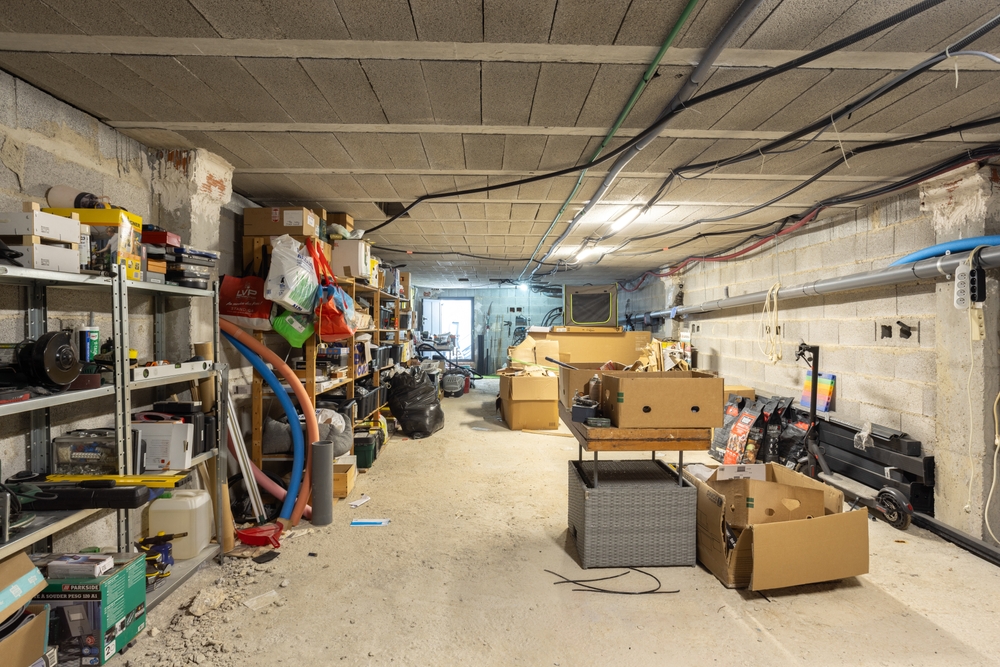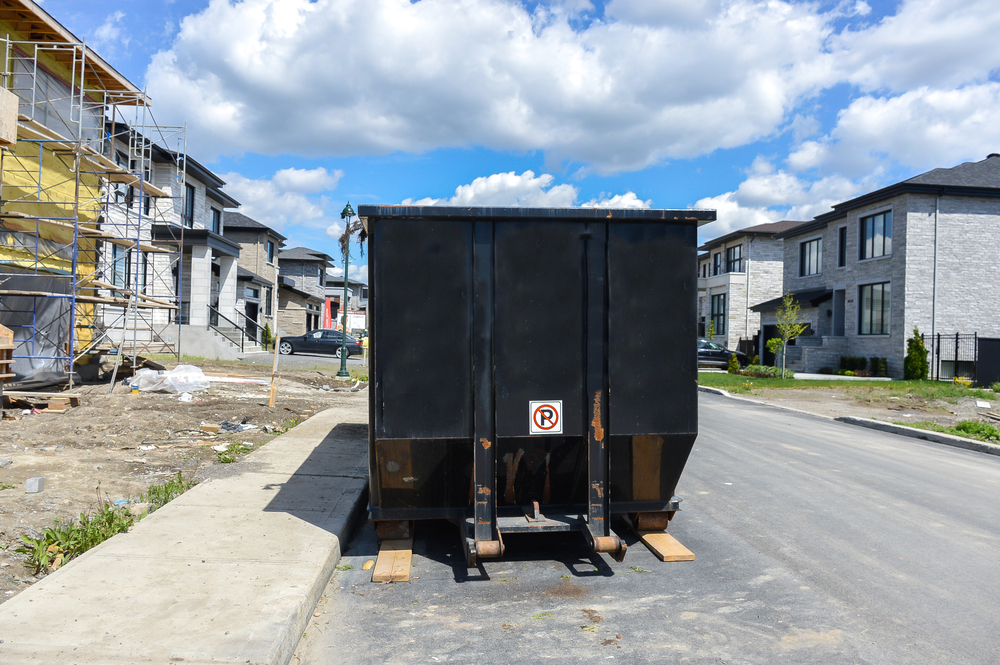
Years’ worth of saved belongings have taken up residence in your basement. What could have been a useful living space has been turned into cluttered storage by old furniture, boxes of forgotten memories, holiday decorations, and things you’ve been meaning to get rid of for years. A thorough cleanout is a significant undertaking that calls for preparation, strategy, and the appropriate tools, whether you’re getting ready for spring cleaning, downsizing, or just taking back your basement.
The good news? A basement cleanout is absolutely achievable with a clear action plan and the proper support. This comprehensive guide will walk you through every step of the process, from initial assessment to final disposal, ensuring you tackle this project efficiently and effectively.
Why Basement Cleanouts Matter
Before diving into the logistics, let’s address why basement cleanouts are worth your time and effort. A cluttered basement represents lost potential. That space could become a workshop, home gym, playroom, media room, or simply provide peace of mind knowing your home is organized and functional. For large cleanout projects, choosing a residential dumpster rental in Roswell can simplify the process by giving you an easy, efficient way to manage and dispose of unwanted items.
A cleaner basement has useful advantages beyond just being functional. Eliminating trip hazards and possible pest habitats increases home safety. If you intend to sell, it raises the value of your house. It lessens the tension and worry brought on by clutter. The mental boost that comes from finishing a large cleanout project is often worth the effort on its own.
Assessing Your Basement: The Starting Point
Begin by thoroughly evaluating your basement’s current state. Walk through the entire space and mentally categorize what you see. Are there items stacked haphazardly? Do certain areas serve specific purposes that should be maintained? Are there any moisture issues, pest concerns, or structural problems you should address while cleaning?
Take pictures of everything as it is. Although it may not seem necessary, before-and-after pictures are a great source of inspiration while working on a project and are also useful for documentation if you’re working with contractors or intend to renovate later.
Make a simple inventory of the main things. Identifying large furniture pieces, storage containers, and other substantial items helps you plan the logistics of removal, but you don’t have to catalog everything.
Consider whether you’re dealing with any hazardous materials. Basements in older homes might contain asbestos, lead paint, or other substances requiring professional removal. Identify these early so you can factor them into your timeline and budget.
Creating Your Decluttering Strategy
Approaching a basement cleanout without a strategy often leads to overwhelming and unsatisfying results. Instead, develop a systematic plan that breaks the project into manageable phases.
- The Room-by-Room Approach: If there are designated spaces in your basement (such as a workshop, storage room, or utility area), thoroughly clean one before proceeding to the next. This generates momentum and yields observable advancement.
- The Category Method: Pay more attention to particular kinds of objects than actual locations. Sorting holiday decorations, old furniture, and boxes of various items, for instance, should all take up a single day. With each category, you increase your decision-making efficiency, which is why this method is effective.
- The Four-Box System: As you sort items, use four designated containers or areas labeled: Keep, Donate, Sell, and Discard. This prevents items from being shuffled back and forth indecisively.
Making Decisions About Your Belongings
The decision-making process is the heart of any cleanout. For each item, ask yourself critical questions: Do I use this regularly? Does it have sentimental value I genuinely want to preserve? Would I purchase this item again today? Is it in working condition? Will I actually follow through with that project I’m keeping supplies for?
Be honest with yourself. Items you’re “keeping just in case” often stay in storage indefinitely. If an item hasn’t been used in two years and you can’t articulate a specific reason for keeping it, it’s likely a candidate for removal. When you’re ready to part with unused items, renting a 20-yard dumpster in Milton provides the perfect balance of space and convenience for efficiently handling your basement cleanout or decluttering project.
Set limits for sentimental objects. Instead of keeping three boxes of childhood memories, you might decide to keep just one. To preserve the memory without the physical clutter, you could take pictures of objects before throwing them away. This method respects your current space limitations while paying homage to the item’s historical significance.
If you have valuable items that you no longer want, think about selling them. Local buyers, consignment stores, and internet marketplaces all provide opportunities to recoup some value. But reasonable costs and work are crucial. You can save energy for high-value items by knowing when to donate instead of sell; some items aren’t worth the time and hassle of listing.
Organizing Items for Removal
Once you’ve sorted everything, organize items by removal method. This is crucial for efficient disposal and helps you plan which resources you’ll need.
Donation Items: Contact local charities, churches, schools, or community centers. Many accept bulk donations and provide pickup services for large quantities. Some nonprofits specialize in specific items like furniture, clothing, or books. Research their requirements beforehand to avoid making multiple trips.
Sellable Items: Valuable furniture, electronics, tools, and collectibles warrant individual selling efforts. Create listings with clear photos and accurate descriptions. Be responsive to inquiries and willing to negotiate reasonably. Set realistic timelines; if items don’t sell within a month, reconsider whether they deserve ongoing storage space and effort.
Recyclable Materials: Separate cardboard, metals, paper, and plastics if you have a recycling program locally. Breaking down boxes and flattening materials saves space during storage and transport.
Hazardous Waste: Items like paint cans, batteries, electronics, and chemical cleaners require special disposal. Contact your local waste management facility for guidelines on hazardous waste collection days or drop-off locations.
General Trash and Debris: This is where dumpster rentals become invaluable, especially for basement cleanouts involving significant debris, old furniture you’re not selling, damaged items, and construction waste.
The Role of Dumpster Rentals in Basement Cleanouts
A roll-off dumpster is the most effective disposal option for many homeowners doing basement cleanouts. Having a dumpster on-site simplifies the process rather than requiring numerous trips to transfer stations or landfills.
When you have broken furniture, water-damaged boxes, old carpet or flooring, or other general debris that wouldn’t survive a trip to a donation center or doesn’t warrant the effort of selling, dumpster rentals are especially helpful. As you sort, you can load items straight into the dumpster, removing the need for temporary storage.
The size of your basement and the quantity of accumulated items should be taken into account when selecting a dumpster size. Depending on how crowded your space is and what kinds of items you’re throwing away, a standard basement cleanout may call for a 20- or 30-yard dumpster. Based on the details of your project, the majority of dumpster rental companies can offer advice.
Usually lasting five to fourteen days, the rental period allows you enough time to finish sorting and removing without feeling rushed. Many organizations provide flexible scheduling for pickup and delivery to fit your project’s timeline.
Creating a Timeline and Action Plan
Success requires realistic scheduling. A basement cleanout rarely happens in a single weekend, especially if you’re the only person working.
- Week One: Sort items from one area of the basement, finish your first review, and create your sorting system.
- Week Two: Sort the remaining sections, divide the items according to how they should be disposed of, and, if necessary, schedule a donation pickup.
- Week Three: Arrange your dumpster rental, list items for sale online, and begin loading the dumpster with items destined for disposal.
- Week Four: Continue loading the dumpster, follow up on sold items for pickup, deliver remaining donations, and complete final cleanup.
This schedule is based on the idea that you are working on the project part-time. You may significantly decrease the timeline if you put in full-time work or enlist the assistance of family members.
Cleaning and Preparing After Removal
Once items are removed, the real cleanup begins. Sweep or vacuum thoroughly to remove years of dust and debris. Wipe down shelving and storage units. Address any moisture issues that might have contributed to item deterioration or mold growth.
This is an ideal time to check for and address any pest problems, water damage, or other basement issues that clutter might have been masking. Consider painting walls, improving lighting, or upgrading storage solutions before bringing new items into the space.
Preventing Future Basement Clutter
A cleanout represents an opportunity to establish new habits. Once you’ve invested effort in clearing your basement, you’ll want to prevent it from becoming cluttered again.
Establish a “one in, one out” rule for new items entering storage. Create zones for specific purposes rather than allowing the space to become a catch-all. Label storage containers clearly so you know what’s inside without opening everything. Schedule seasonal reviews of basement storage to catch accumulation early.
Be intentional about what you store in your basement. Just because space exists doesn’t mean it should be filled with items you’re not using actively. Quality of stored items matters more than quantity.
Reclaim Your Space with a Basement Cleanout
Although a basement cleanout is a big undertaking, it is very doable with preparation, methodical sorting, and the right disposal tools. Reduced stress, a higher home value, and more usable space are all benefits of a thorough cleanout, regardless of your motivations: spring cleaning, downsizing, or recovering functional space in your house.
Implement a sorting strategy, start with a realistic assessment, and don’t be afraid to hire professionals for removal. By removing the logistical burden of disposal, a roll-off dumpster rental frees you up to concentrate on sorting and making decisions. As you organize your basement, keep in mind that getting rid of things you no longer need creates mental and physical room for the things that are most important.
You don’t have to store forgotten things in your basement. It can be transformed into a well-organized, useful area that truly enhances the value of your house with dedication and the appropriate strategy. Start cleaning out your basement now to uncover the potential that has been hidden by years of clutter. Ready to get started? Contact Speedy Dumps, Inc. today to schedule your dumpster rental and make your basement cleanout faster, easier, and stress-free.

